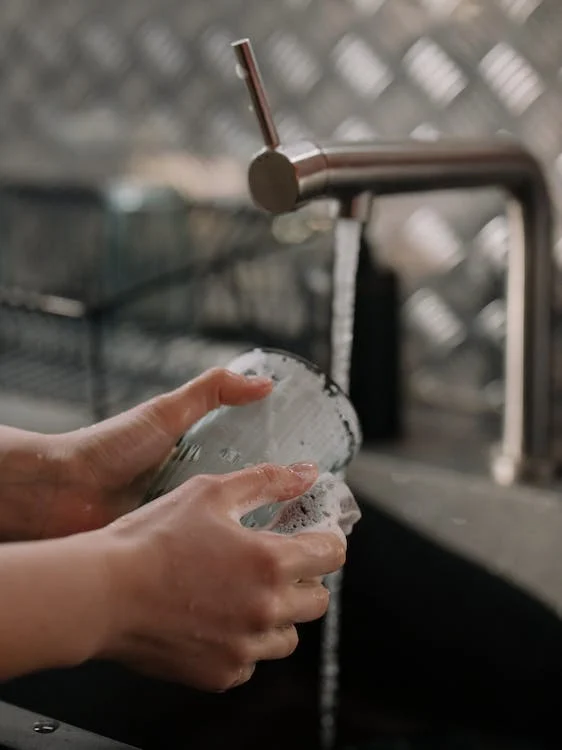The kitchen is undeniably the heart of the home, a place where delicious meals are prepared, cherished memories are made, and conversations are shared. But with the constant use and exposure to various ingredients, grease, and spills, it’s no surprise that kitchens require regular maintenance and cleaning. However, achieving a pristine kitchen doesn’t have to be an overwhelming task.
A clean and well organised kitchen is not only aesthetically pleasing but also essential for maintaining a healthy and hygienic environment. However, with the hustle and bustle of daily life, it’s easy for the kitchen to become a chaotic and grimy space. Fear not! In this article, we will delve into the realm of kitchen cleaning methods, equipping you with valuable insights and effective techniques to transform your culinary haven into a spotless sanctuary. From tackling stubborn stains to organizing cluttered cabinets, get ready to master the art of kitchen cleaning!
The most important things
By employing the right cleaning methods and incorporating them into your routine, you can keep your kitchen sparkling clean and inviting, ready to inspire your culinary adventures. Whether you’re a seasoned home chef or a novice cook, these tried-and-true cleaning techniques will ensure that your kitchen remains a haven of freshness, efficiency, and hygienic bliss.
Importance of cleaning
Before diving into the specifics, let’s emphasize the importance of cleaning. Begin by removing any clutter, such as empty bottles, packaging, or utensils, that may hinder your cleaning process. Wipe down countertops, stovetops, and sinks to eliminate loose debris. This initial step sets the stage for a more thorough and effective cleaning session.
How to deal with benchtops
Countertops (or benchtops)and surfaces are the workhorses of your kitchen, often bearing the brunt of spills, stains, and food residue. To keep them immaculate, start by identifying the material of your countertops, as each requires a specific approach. For surfaces like quartz or laminate, a mixture of warm water and mild dish soap can work wonders. Apply the solution with a soft cloth or sponge, gently scrubbing away any stains. Rinse with clean water and dry thoroughly to avoid streaks.
Natural stone surfaces, such as granite or marble, demand more delicate care. Use a natural cleaner and a non-abrasive sponge or cloth to prevent scratches. Avoid harsh chemicals and acidic solutions, as they can damage the stone’s protective sealant. Wooden countertops necessitate regular oiling to maintain their lustre and protect them from water damage. Apply food-grade mineral oil in a circular motion, allowing it to penetrate the wood. Wipe off any excess oil after a few minutes.
Stainless steel elements
Stainless steel appliances lend a sleek and modern look to any kitchen. However, fingerprints, smudges, and water spots can quickly diminish their shine. To restore their brilliance, mix equal parts water and vinegar in a spray bottle. Spritz the solution onto a microfiber cloth and gently wipe the stainless steel surfaces, following the grain. For stubborn stains, create a paste by combining baking soda and water, and gently rub it onto the affected area. Rinse with warm water and dry thoroughly to avoid water spots.
Kitchen surfaces, especially those near stovetops and range hoods, are prone to greasy buildup. To banish the grease, use a degreaser specifically formulated for kitchen use. Apply it to the affected area, let it sit for a few minutes, and then wipe it away with a clean cloth. For stubborn grease stains, sprinkle baking soda on a damp sponge and scrub gently. Rinse with warm water and dry thoroughly. Cleaning a kitchen is a must since this is where we cook our food. I thinking of using natural cleaning methods you check this post.
From the refrigerator to the oven, each kitchen appliance requires dedicated attention to maintain cleanliness and functionality. For the refrigerator, regularly discard expired food items and wipe down spills with a mixture of water and mild detergent. Remove shelves and drawers for a more thorough clean, letting them soak in warm, soapy water.
Ovens
Ovens can accumulate tough, baked-on grime. They are probably the most difficult appliance to clean in the entire kitchen. Most people decide to hire professionals for this job, we probably could recommend Optima Cleaners from Perth: https://optimacleaners.com.au/oven-and-bbq-cleaning/perth/ But if you decide to tackle this yourself, this is the most effective method: create a paste with baking soda and water, and spread it evenly over the oven’s interior. Let it sit overnight, and then scrub the softened grime with a sponge or cloth. Rinse thoroughly with warm water and wipe dry.
A pristine and organised kitchen not only enhances the joy of cooking but also contributes to a healthier home environment. By implementing these effective cleaning methods into your routine, you can effortlessly maintain a spotless sanctuary where creativity and culinary delights flourish. Remember, consistency is key! By incorporating these techniques into your regular kitchen cleaning regimen, you’ll be well on your way to enjoying a sparkling, inviting, and hygienic space for all your culinary adventures.

